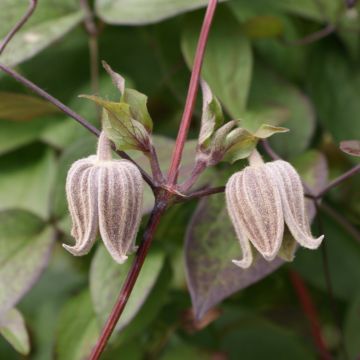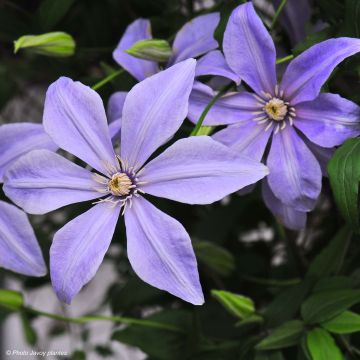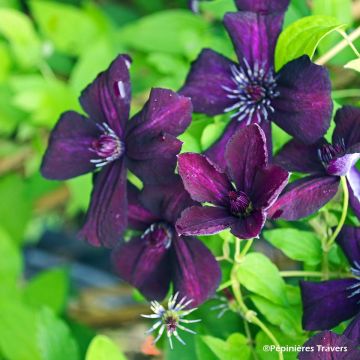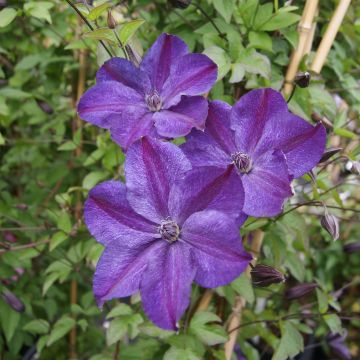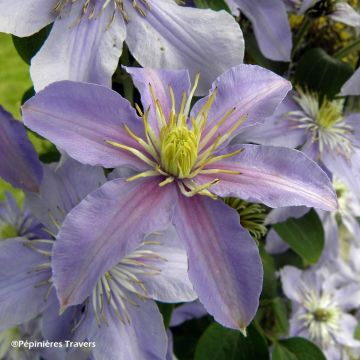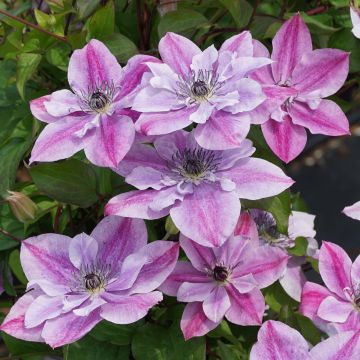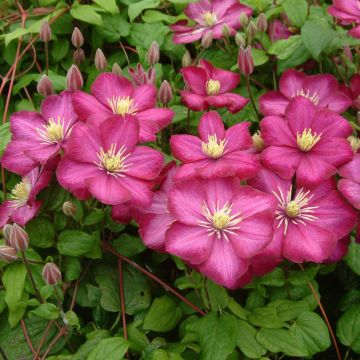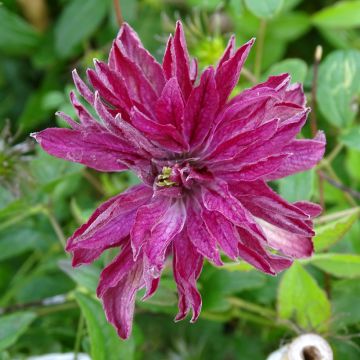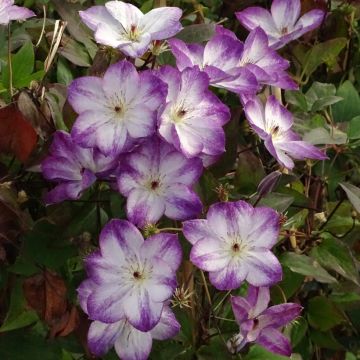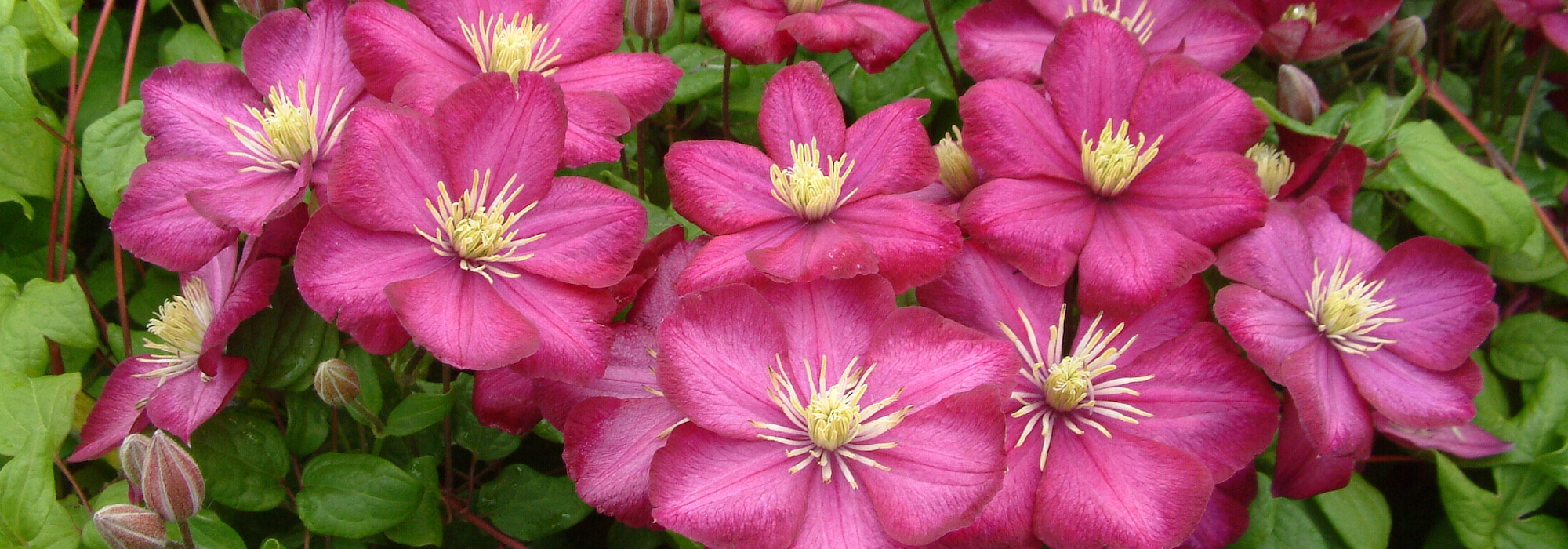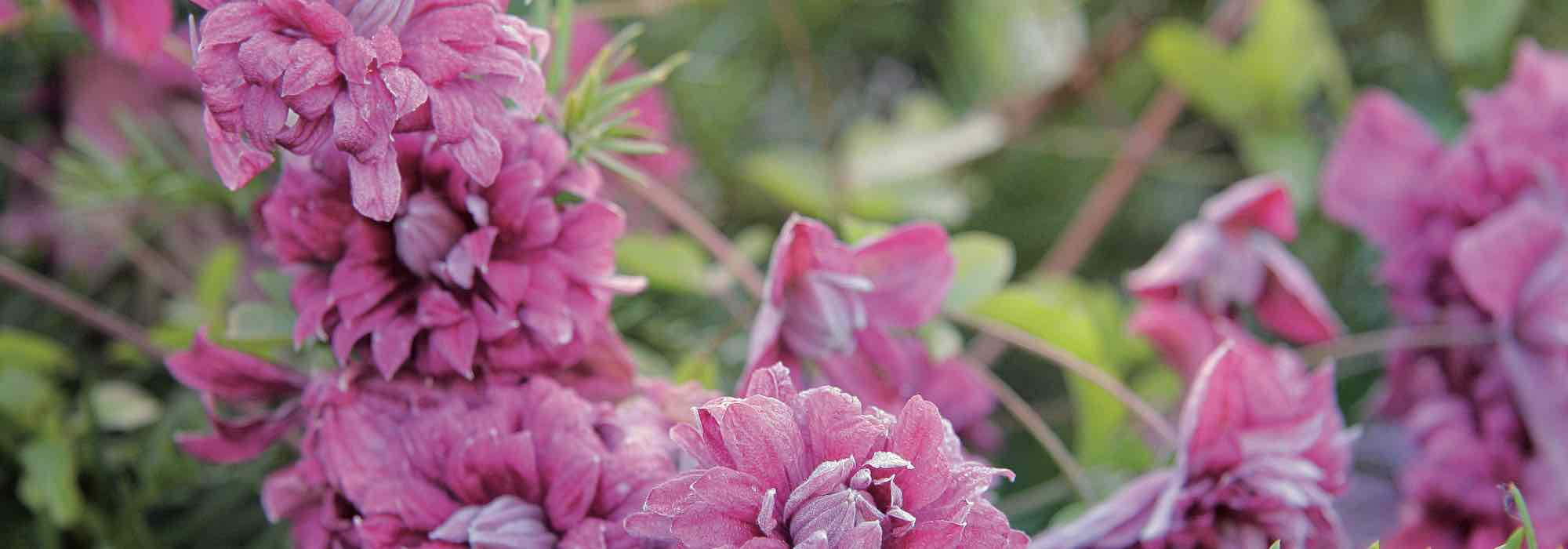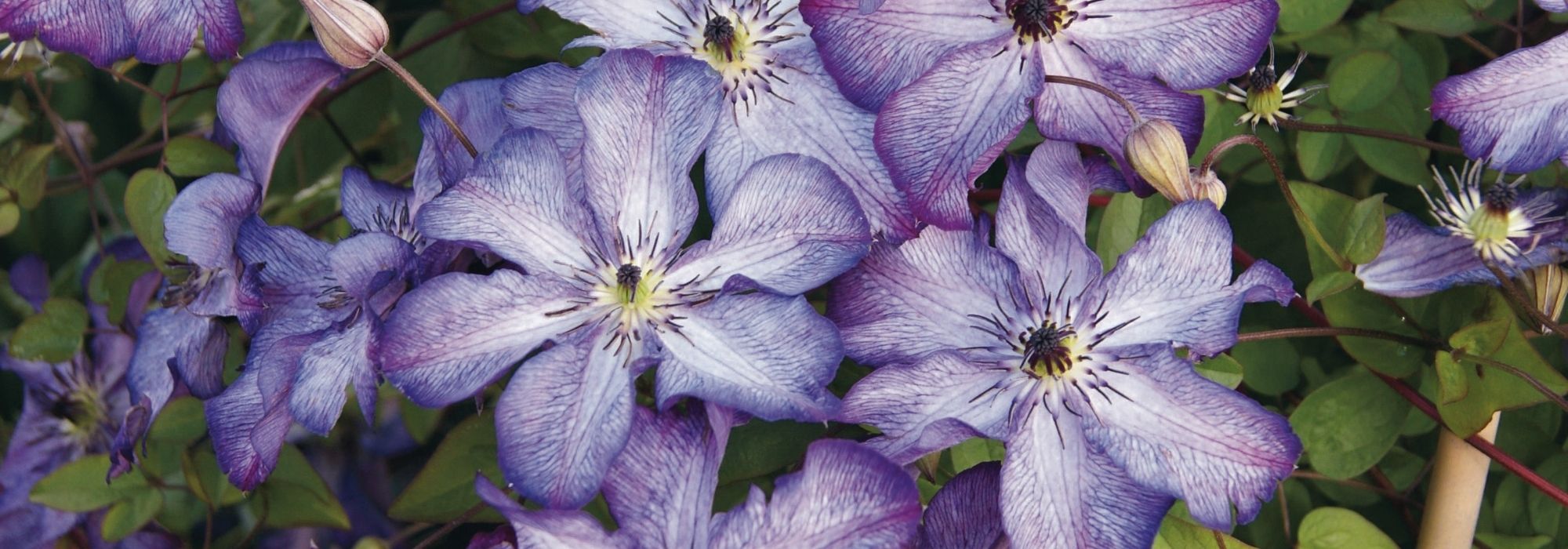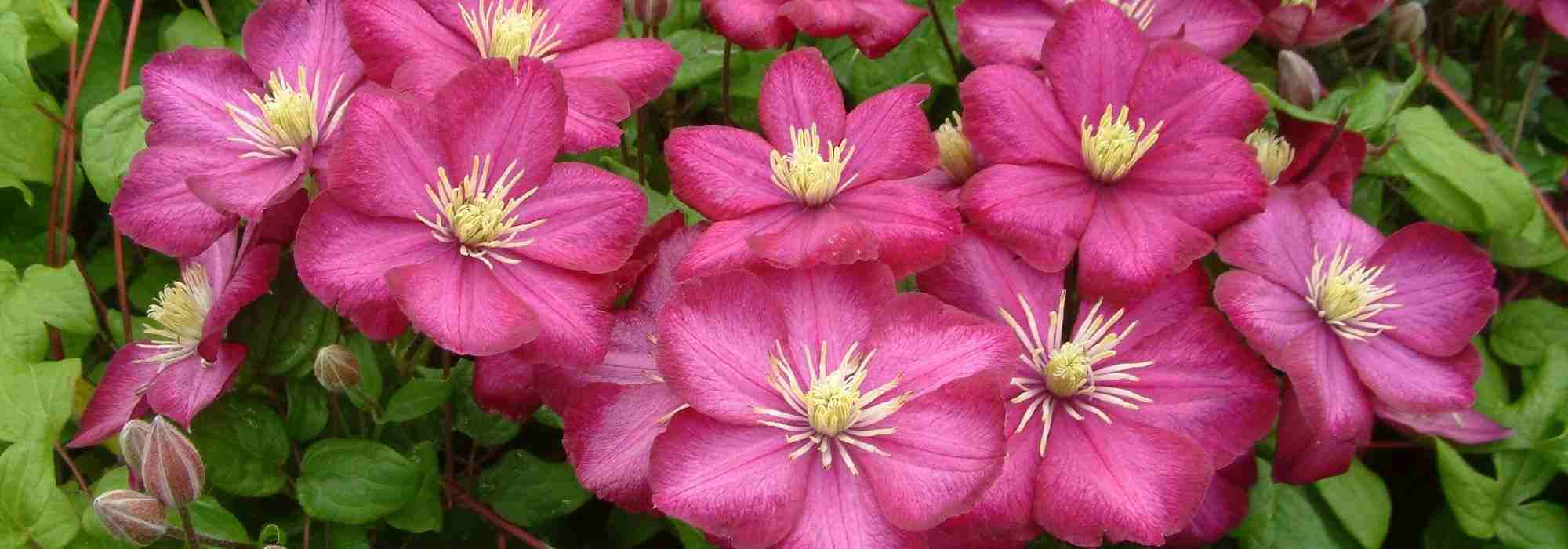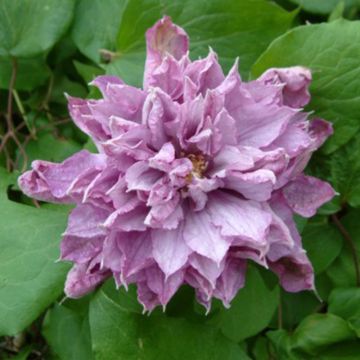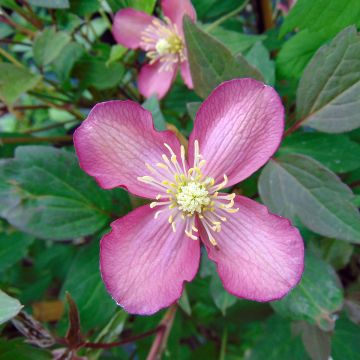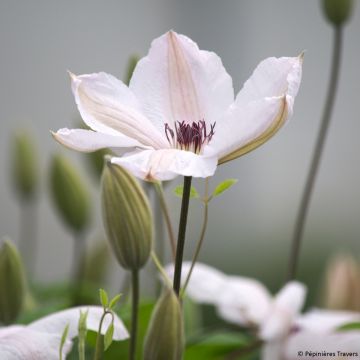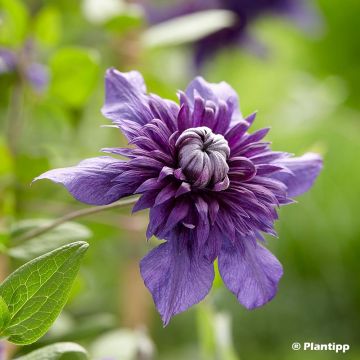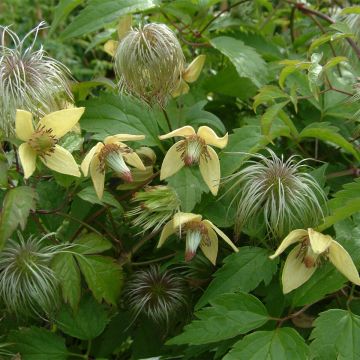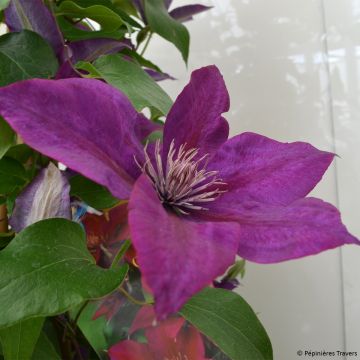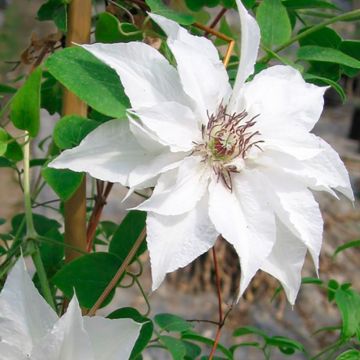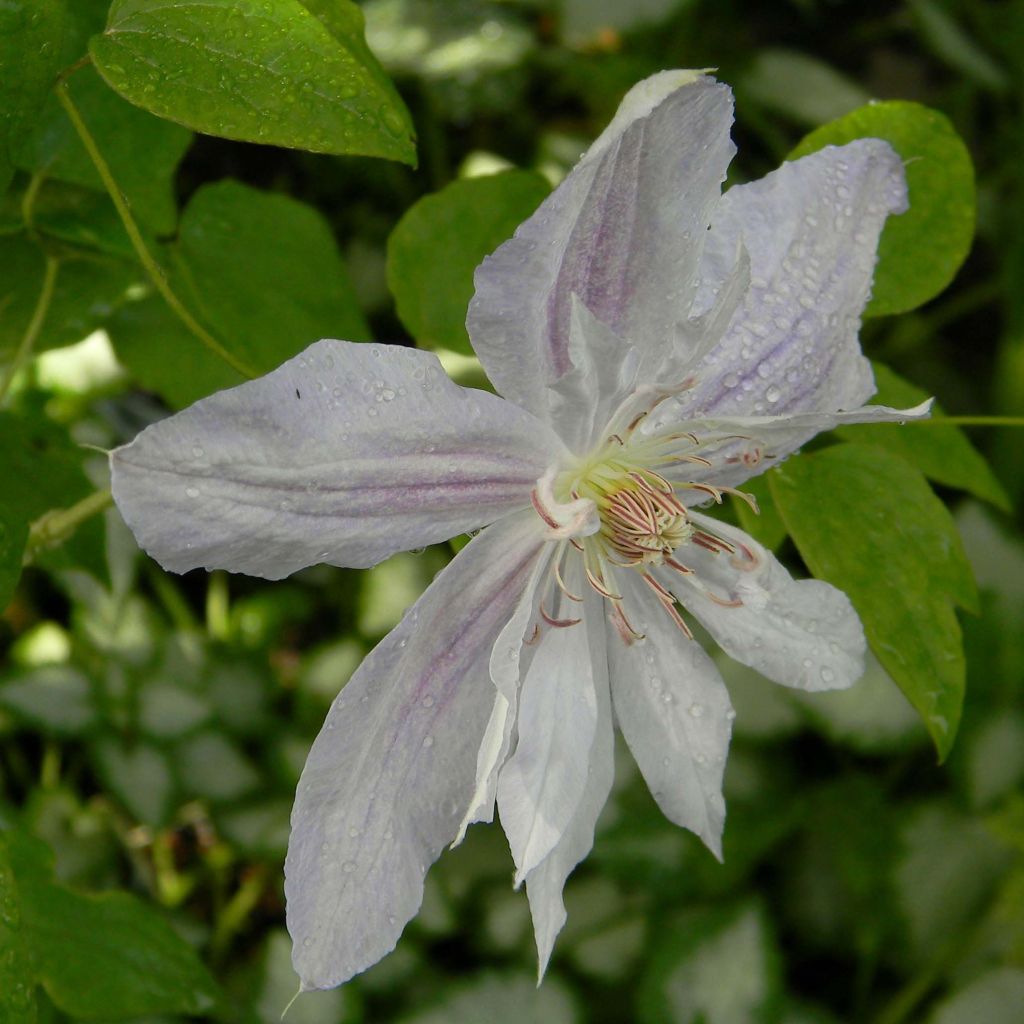

Clematis jackmanii Alba
Clematis jackmanii Alba
Clematis jackmanii Alba
Jackman's Clematis
Purchased in spring 2020, this clematis has not stopped growing and drying out during its two seasons. I'm losing hope of seeing it start again next year because it's been a while since I've seen a green leaf. It hasn't flowered.
Solène, 17/09/2021
Special offer!
Receive a €20 voucher for any order over €90 (excluding delivery costs, credit notes, and plastic-free options)!
1- Add your favorite plants to your cart.
2- Once you have reached €90, confirm your order (you can even choose the delivery date!).
3- As soon as your order is shipped, you will receive an email containing your voucher code, valid for 3 months (90 days).
Your voucher is unique and can only be used once, for any order with a minimum value of €20, excluding delivery costs.
Can be combined with other current offers, non-divisible and non-refundable.
Home or relay delivery (depending on size and destination)
Schedule delivery date,
and select date in basket
This plant carries a 6 months recovery warranty
More information
We guarantee the quality of our plants for a full growing cycle, and will replace at our expense any plant that fails to recover under normal climatic and planting conditions.
Would this plant suit my garden?
Set up your Plantfit profile →
Description
Clematis jackmanii 'Alba' is a sumptuous early-flowering variety, with rapid growth, vigorous, bushy, and compact habit. Little known, it adorns itself, throughout the summer, with large spectacular flowers, semi-double, white with pale mauve and bluish reflections, becoming single and white-cream during the second flowering in September. A rarity not to be missed, for Clematis and exceptional flower enthusiasts.
Clematis jackmanii, also known as Jackman's Clematis, belongs to the Ranunculaceae family and is a hybrid resulting from a cross between Clematis lanuginosa and Clematis viticella. It belongs to the group of early-flowering large-flowered Clematis. Clematis attach themselves to their support through petioles transformed into tendrils. This magnificent 'Alba' variety is a climbing plant with a woody stump, bushy, dense, and compact, with deciduous foliage. With rapid and vigorous growth, it can climb up to 3 meters (10 feet) in height, with a spread of about one meter. This splendid and floriferous variety displays, from May to June, magnificent semi-double flowers, measuring 15 cm (6in) in diameter, with pointed sepals. The outer sepals of the flowers are milky white tinged with mauve, while those in the center are white shaded with blue, contrasting beautifully with a light chocolate stamen heart. A second flowering takes place in September, but the flowers often change in appearance, becoming single and their colour turns to off-white. As if two Clematis existed in one!
Early-flowering large-flowered Clematis, the ultimate climbing plants, are easy to grow and can be staged in countless ways. Essential in English gardens, Clematis undoubtedly bring a romantic, natural, and wild touch to the garden. They will be the perfect companions to climbing or non-remontant rose bushes, thanks to their long uninterrupted flowering until autumn. They will certainly be the ideal plants to adorn and enhance walls, trellises, pergolas, arches, fences, etc. But also trees, shrubs, and hedges, bringing colour when other blooms have faded. Clematis are also excellent candidates for container cultivation, to animate a balcony, terrace, or patio. It is advisable to avoid excessively hot locations, both in pots and in the ground. The 'Alba' jackmanni variety will be beautiful when associated with a climbing or rambling rose, a Japanese maple, a bamboo, a Ceanothus, a hibiscus, a wisteria, or a small-leaved lilac. Medium-height perennials will shade its base, such as an Epimedium, a Daylily, a Hellebore, a Heuchera, or a Avens. Opting for species with purple foliage or flowering will create a charming contrast with the white flowering of this Clematis.
Clematis jackmanii Alba in pictures
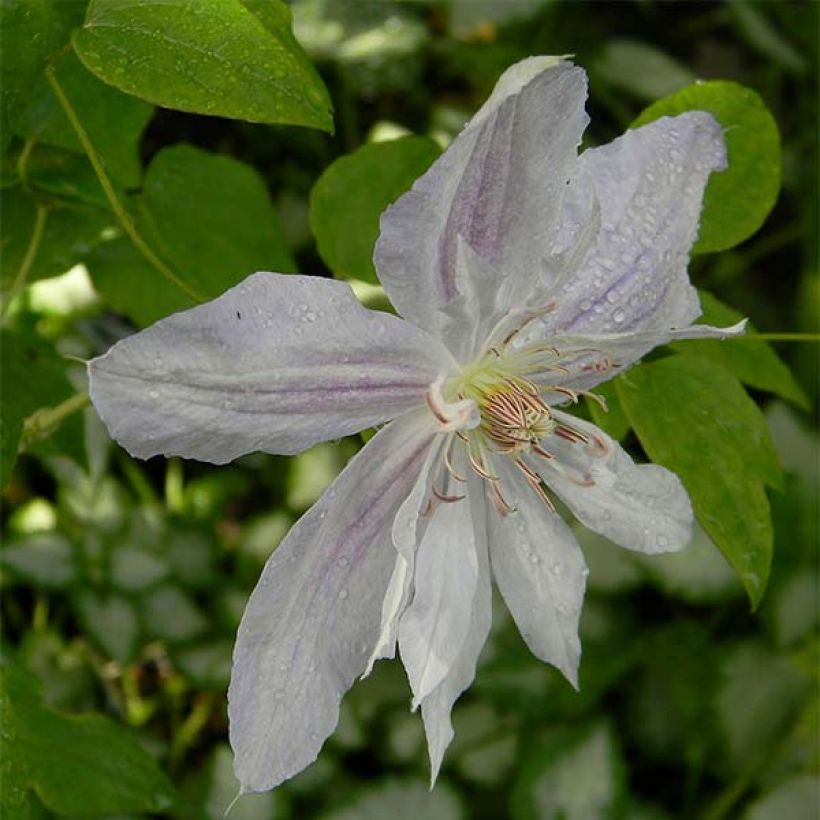

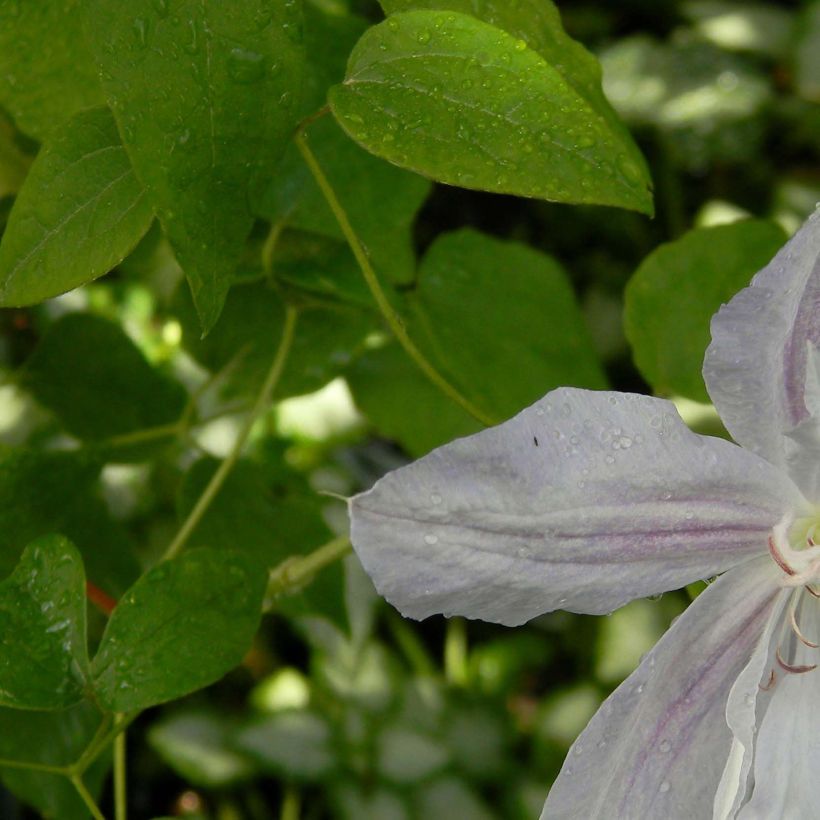

Plant habit
Flowering
Foliage
Botanical data
Clematis
jackmanii
Alba
Renonculacées
Jackman's Clematis
Cultivar or hybrid
Other Clematis Viticella
View all →Planting and care
The 'Alba' Jackmanii Clematis is a perfectly hardy and robust variety. It thrives in a sunny to partially shaded exposure, as well as in fertile, humus-rich, moist, and well-drained soil. Clematis like to reach for the sun, with their roots in the shade. It is therefore absolutely essential that the base of its stem and its roots are in the shade. For this, an inclined flat tile will provide the necessary shading. Similarly, a bushy perennial plant or a low-growing bush planted in front of the Clematis will also provide perfect protection against the sun, attractively concealing the Clematis stump. When planting, care should be taken when handling the root ball as Clematis roots are quite fragile. It will be important to work the soil deeply, incorporating compost and a handful of bone or blood meal, a base fertilizer that will benefit the Clematis's growth. During the first few weeks after planting, regular but moderate watering will be necessary to keep the soil consistently moist. The main enemy of Clematis is excessive moisture, so the soil should never be waterlogged. Indeed, overly moist soil can cause the wilting of its stems and leaves, often leading to its demise. The Clematis plant should be placed in the hole at an angle, with the stem oriented towards the support it will climb on. Cover with soil, creating a small mound of earth to fully cover the base and stem of the Clematis in order to reduce the risk of wilting and promote the emergence of vigorous shoots from the stump. After planting, cut back the stems of summer-flowering Clematis to 30 cm (12in) or 40 cm (16in) above the ground, just above a nice pair of buds. Train the stems without squeezing them until the plant can grip onto the support itself thanks to its voluble petioles. Mulch the Clematis in February with garden compost or well-rotted manure, avoiding direct contact with the stems.
Planting period
Intended location
Care
Planting & care advice
-
, onOrder confirmed
Reply from on Promesse de fleurs
Similar products
Haven't found what you were looking for?
Hardiness is the lowest winter temperature a plant can endure without suffering serious damage or even dying. However, hardiness is affected by location (a sheltered area, such as a patio), protection (winter cover) and soil type (hardiness is improved by well-drained soil).

Photo Sharing Terms & Conditions
In order to encourage gardeners to interact and share their experiences, Promesse de fleurs offers various media enabling content to be uploaded onto its Site - in particular via the ‘Photo sharing’ module.
The User agrees to refrain from:
- Posting any content that is illegal, prejudicial, insulting, racist, inciteful to hatred, revisionist, contrary to public decency, that infringes on privacy or on the privacy rights of third parties, in particular the publicity rights of persons and goods, intellectual property rights, or the right to privacy.
- Submitting content on behalf of a third party;
- Impersonate the identity of a third party and/or publish any personal information about a third party;
In general, the User undertakes to refrain from any unethical behaviour.
All Content (in particular text, comments, files, images, photos, videos, creative works, etc.), which may be subject to property or intellectual property rights, image or other private rights, shall remain the property of the User, subject to the limited rights granted by the terms of the licence granted by Promesse de fleurs as stated below. Users are at liberty to publish or not to publish such Content on the Site, notably via the ‘Photo Sharing’ facility, and accept that this Content shall be made public and freely accessible, notably on the Internet.
Users further acknowledge, undertake to have ,and guarantee that they hold all necessary rights and permissions to publish such material on the Site, in particular with regard to the legislation in force pertaining to any privacy, property, intellectual property, image, or contractual rights, or rights of any other nature. By publishing such Content on the Site, Users acknowledge accepting full liability as publishers of the Content within the meaning of the law, and grant Promesse de fleurs, free of charge, an inclusive, worldwide licence for the said Content for the entire duration of its publication, including all reproduction, representation, up/downloading, displaying, performing, transmission, and storage rights.
Users also grant permission for their name to be linked to the Content and accept that this link may not always be made available.
By engaging in posting material, Users consent to their Content becoming automatically accessible on the Internet, in particular on other sites and/or blogs and/or web pages of the Promesse de fleurs site, including in particular social pages and the Promesse de fleurs catalogue.
Users may secure the removal of entrusted content free of charge by issuing a simple request via our contact form.
The flowering period indicated on our website applies to countries and regions located in USDA zone 8 (France, the United Kingdom, Ireland, the Netherlands, etc.)
It will vary according to where you live:
- In zones 9 to 10 (Italy, Spain, Greece, etc.), flowering will occur about 2 to 4 weeks earlier.
- In zones 6 to 7 (Germany, Poland, Slovenia, and lower mountainous regions), flowering will be delayed by 2 to 3 weeks.
- In zone 5 (Central Europe, Scandinavia), blooming will be delayed by 3 to 5 weeks.
In temperate climates, pruning of spring-flowering shrubs (forsythia, spireas, etc.) should be done just after flowering.
Pruning of summer-flowering shrubs (Indian Lilac, Perovskia, etc.) can be done in winter or spring.
In cold regions as well as with frost-sensitive plants, avoid pruning too early when severe frosts may still occur.
The planting period indicated on our website applies to countries and regions located in USDA zone 8 (France, United Kingdom, Ireland, Netherlands).
It will vary according to where you live:
- In Mediterranean zones (Marseille, Madrid, Milan, etc.), autumn and winter are the best planting periods.
- In continental zones (Strasbourg, Munich, Vienna, etc.), delay planting by 2 to 3 weeks in spring and bring it forward by 2 to 4 weeks in autumn.
- In mountainous regions (the Alps, Pyrenees, Carpathians, etc.), it is best to plant in late spring (May-June) or late summer (August-September).
The harvesting period indicated on our website applies to countries and regions in USDA zone 8 (France, England, Ireland, the Netherlands).
In colder areas (Scandinavia, Poland, Austria...) fruit and vegetable harvests are likely to be delayed by 3-4 weeks.
In warmer areas (Italy, Spain, Greece, etc.), harvesting will probably take place earlier, depending on weather conditions.
The sowing periods indicated on our website apply to countries and regions within USDA Zone 8 (France, UK, Ireland, Netherlands).
In colder areas (Scandinavia, Poland, Austria...), delay any outdoor sowing by 3-4 weeks, or sow under glass.
In warmer climes (Italy, Spain, Greece, etc.), bring outdoor sowing forward by a few weeks.































